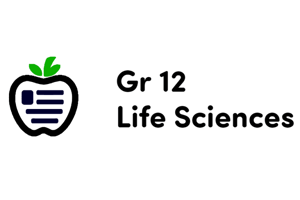Podcast
Questions and Answers
Where does meiosis take place in human reproduction?
Where does meiosis take place in human reproduction?
- Bladder in females and penis in males
- Uterus in females and prostate in males
- Testes in males and ovaries in females (correct)
- Fallopian tubes in females and vas deferens in males
What is the result of spermatogenesis in males?
What is the result of spermatogenesis in males?
- 2 diploid sperm per original diploid cell
- 1 haploid sperm per original diploid cell
- 4 haploid sperm per original diploid cell (correct)
- 8 haploid sperm per original diploid cell
What is formed post-fertilization when the egg and sperm fuse?
What is formed post-fertilization when the egg and sperm fuse?
- Gamete
- Embryo
- Zygote (correct)
- Blastocyst
How many chromosomes are present in a zygote after fertilization?
How many chromosomes are present in a zygote after fertilization?
What happens to the zygote after fertilization?
What happens to the zygote after fertilization?
What is the process called when the egg and sperm fuse together?
What is the process called when the egg and sperm fuse together?
What occurs during the first few weeks postimplantation?
What occurs during the first few weeks postimplantation?
At what stage does the embryo rapidly expand due to cell division?
At what stage does the embryo rapidly expand due to cell division?
What is essential for proper embryonic development during gestation?
What is essential for proper embryonic development during gestation?
What triggers contractions of the uterus known as labor?
What triggers contractions of the uterus known as labor?
When do external features like facial structures form?
When do external features like facial structures form?
What gradually prepares both parents and offspring for extra-uterine living?
What gradually prepares both parents and offspring for extra-uterine living?
Study Notes
Understanding Human Reproduction
Human reproduction is an intricate process that ensures continuity of life across generations by creating offspring with unique genetic makeup. Let's delve into this fascinating aspect of our biology, examining some key concepts along the journey from conception to birth.
Meiosis and Fertilization
The primary step in human reproduction involves meiosis, which takes place within gonads—the testes in males and ovaries in females:
- In males, spermatogenesis occurs; millions of sperm cells develop through mitosis followed by meiosis I and II, resulting in 4 haploid sperm per original diploid cell.
- Females produce egg cells via oogenesis during fetal development. After birth, each ovary retains around one million eggs, but only one will mature and release monthly thanks to the hormonal changes associated with menstruation.
Once released, these gametes fuse together in a phenomenon known as fertilization, resulting in a new single cell called a zygote containing 23 chromosomes (half of the parental number). This event initiates the processes leading up to pregnancy.
Embryonic Development
Postfertilization, the zygote undergoes repeated divisions forming a multicellular structure called a blastocyst. At this stage, it implants itself in the uterine lining, where it absorbs nutrients and continues its growth:
- During the first few weeks postimplantation, the embryo rapidly expands due to cell division, establishing three germ layers—ectoderm, mesoderm, and endoderm—specifying tissues and organs.
- By week eight, all major organ systems begin developing, while external features like facial structures form between weeks nine and twelve.
During gestation, the mother supplies vital resources such as oxygen and nutrition through her bloodstream, ensuring proper embryonic development.
Pregnancy and Labor
By the end of the third trimester, further expansion and maturation occur until the baby reaches approximately 7 pounds, ready for independent survival outside the womb:
- As delivery nears, hormones stimulate contractions of the uterus known as labor, facilitating passage of the infant out of the uterus and into the world.
- Following birth, various physiological adaptations take place, gradually preparing both parents and offspring for extra-uterine living.
In summary, understanding human reproduction requires knowledge of essential biological processes spanning from reproductive system function and gamete formation to early stages of embryonic development and the birth of a healthy child.
Studying That Suits You
Use AI to generate personalized quizzes and flashcards to suit your learning preferences.
Description
Test your knowledge on human reproduction from conception to birth. Explore key concepts such as meiosis, fertilization, embryonic development, pregnancy, and labor.




